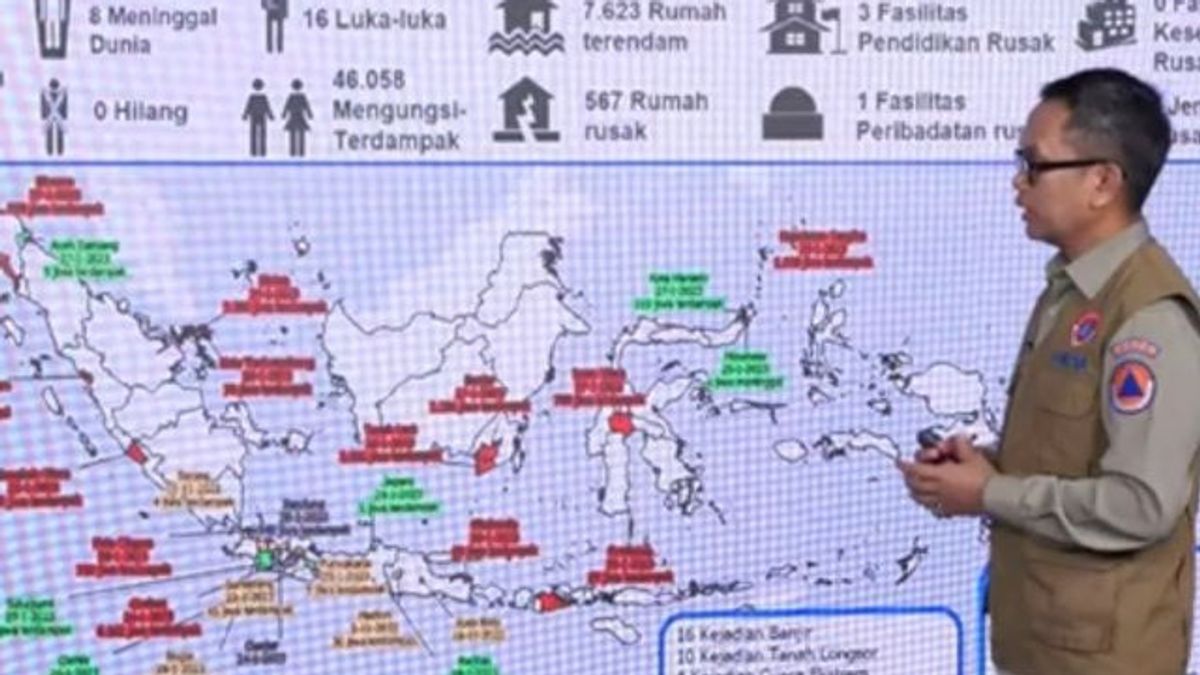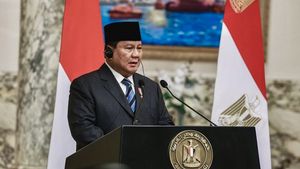JAKARTA - The National Disaster Management Agency (BNPB) noted that 33 hydrometeorological disasters in the past week were dominated by floods and landslides.
Acting Head of the BNPB Disaster Data and Information Center Abdul Muhari, said the report was recorded on 23-29 January 2023.
He detailed the occurrence of tidal wave disasters, one incident each, 16 floods, 10 landslides, and two earthquakes.
"One thing we need to pay attention to is that we are still in the peak period of the rainy season. So until later, late or perhaps early March, we still have to be aware of incidents of wet hydrometeorological disasters, especially floods, landslides and extreme weather," Abdul said as quoted by ANTARA, Tuesday, January 31
However, Abdul reminded that there was a shallow crust earthquake that occurred the last time in Pengalengan, Bandung, with a magnitude of 4.0 enough damage to about 40 houses.
"Even though we are at the peak of the rainy season, our vigilance against potential geological disasters still needs to be considered. Especially for us to look back at our respective homes," he said.
Abdul explained spatially that disaster events in Indonesia that week were very dominant by wet hydrometeorological disasters, floods, tornadoes, and landslides.
Flood events include those in Sumatra and Java. Abdul emphasized that in Sumatra, flood events were associated with significant land transfer. Especially in Java, hydrometeorological disasters cannot be separated from population factors, where the population is quite high.
BNPB also intervenes with weather modification technology (TMC) to several areas to help a number of areas that are still hit by floods, so that they recede quickly and dry up.
However, Abdul said the most significant incident was the floods in Manado, North Sulawesi, which caused one person to die, and four died as a result of landslides. and nearly 2,000 people were displaced. A large flood current caused damage to houses.
According to Abdul, the potential for high rainfall is influenced by the presence of several cyclone seeds also in the region in the Indian Ocean and also the Pacific Ocean, which affects moisture and water vapor in Indonesia.
Currently, Indonesia is still in the phase of influence from La Nina and also the Median Julian Oscillation, or the Indian Ocean Dipole to the west which shows the influence of wet clouds.
Meanwhile, in the east in the Pacific, Indonesia is still under the influence of negative La Nina, so this still carries large amounts of water vapor in most parts of Indonesia.
The English, Chinese, Japanese, Arabic, and French versions are automatically generated by the AI. So there may still be inaccuracies in translating, please always see Indonesian as our main language. (system supported by DigitalSiber.id)













